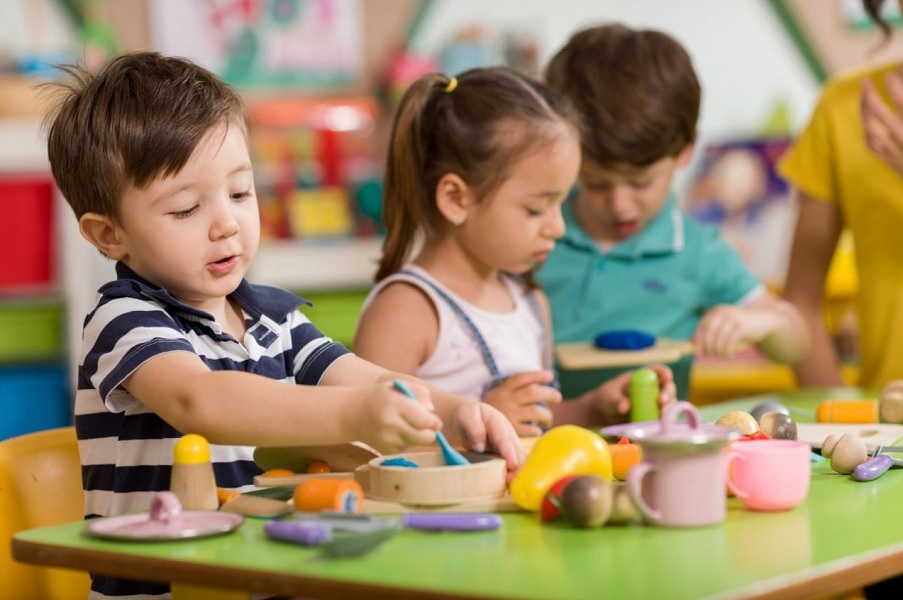The world serves as you big classroom for toddlers. They like to grasp new concepts, so it is time for you to lay the building blocks for future skills like reading and counting, a lecturer in the team of education at Tufts College or university in Medford, Massachusetts. The main element is to experiment with off your son or daughter’s interests. Here are fun learning activities for 2- year-olds that match every day life.
- Displaying Her Name
Around time 2, your child will begin to recognize the letters that make up her name, so be sure to display it during your home-on her bedroom door, a bathroom step stool, the fridge, etc. Indicate the letters, expressing each one aloud, advises Dr. Seaton. Discuss other words that start with the same letter as her name does (“C is designed for Caitlin, but it’s also for pet cat and cup”).
- Reading Signs
Point out words and words on street signs, in stores, with the doctor’s office. Say them aloud (“That signal says stop”), and help your son or daughter think of other rhyming words (“Stop sounds like hop, bop, and mop”). To help your toddler hook up words to the sounds they make, speak slowly, enunciate evidently, and place your finger under the words and words as you read.
- Counting Everyday Items
Your 2-year-old might be able to recite the statistics one to ten to be able, but the ability to seriously count probably won’t come until his preschool days. Still, you can bolster his number acceptance by tallying up totals as you get him outfitted (“One, two, three switches”), prepare meals (“A couple of six peas on your plate”), and look for groceries (“I have three potatoes, so I need yet another to make four”). Use your hands when keeping track of, and encourage him to backup you along with his fingers. To get more information about toddler learning
- Separating Things by Type or Color
The act of observing, comparing, and contrasting objects is a essential part of early mathematics. Fortunately, little kids are getting better at sorters. With this learning activity for toddlers, ask your son or daughter to group his stuffed family pets by type (felines in a single pile, bears in another) or by color. Decide if he can individual your clean socks from his when you do the laundry, and also have him put different-size spoons in their proper devote the silverware holder. Sometime before age 2, your son or daughter will also acknowledge the difference between less and much more. Ask questions like ‘Which pile gets the most and which the least?.
- Making a Condition Book
Plenty of children’s titles teach kids about figures, nevertheless, you can go one better by supporting your toddler make her own bound volume. After drawing styles on a bit of newspaper, flip through magazines and papers together and minimize out items which match each one, implies English. Then get a walk to consider other objects with distinctive shapes. Snap photographs of the things your child points out-a square home window, a round tire, a rectangular brick. Print and paste the pictures into the book when you go back home and label the designs. Put multiple cases on a full page showing that forms come in several sizes.
- Teaching Forms in the Kitchen
Cookies needn’t continually be round, rather than all sandwiches are square. Many favorite foods-pancakes, cheese slices, and bread-can be lower into triangles, squares, stars, ovals, diamonds, and even more. From the kitchen, try making your child track figures of cookie cutters onto a bit of newspaper, and then help her identify and label each one, suggests English.
- Finger Painting for Color Recognition
For hands-on contact with colors, let your son or daughter drop into finger paints as a great learning activity for toddlers. Name the colors as he spreads each one. Once the masterpiece dries, you can embark on a scavenger hunt around your home, looking for items which match the colors used in the picture. Discussion about how exactly there a wide range of colours of colors-from pale sky blue to blue that’s so dark it looks almost black.
- Incorporating Vibrant Language
Use descriptive dialect as much as possible to help your son or daughter recognize different colors (“Is it possible to put this yellowish ball into the blue bin?”). At mealtime ask, “Would you like more of the red apple or the yellowish banana?” You can even try designating every day honoring a color, says British. Wear inexperienced on Thursday and eat inexperienced grapes and inexperienced beans while enjoying green-colored milk (just a little food colouring will do the secret). Then, at the end of the day, let your son or daughter unwind in a shower tinted renewable with fizzy bath tablets.






